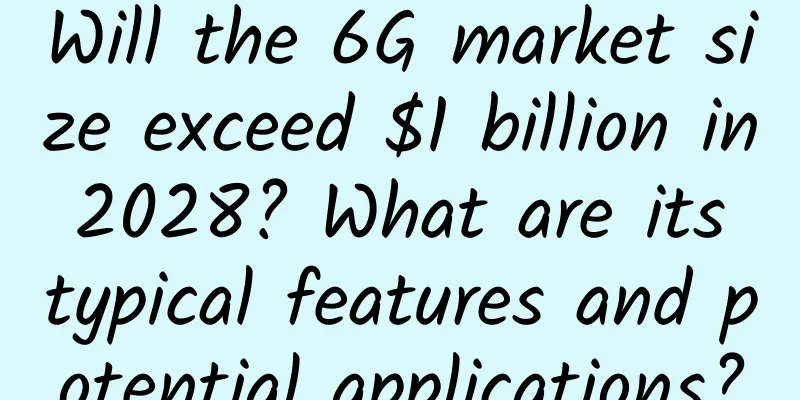From the SPACE matrix, is 5G on the road to success?

|
In September 1830, the world's first intercity passenger railway was built between Liverpool and Manchester. This 56-kilometer railway connected the port of Liverpool with the textile industry of Manchester, forming the first industrial chain of the Second Industrial Revolution. Subsequently, the British Isles entered the famous railway boom era in industrial history, and by 1945, more than 1,000 railway projects had been proposed. But if we go back to the historical scene, we will find that in the early days of railway development, a large number of newspapers, speakers and salon critics have raised various negative opinions on railway investment, believing that too much and too fast, relatively advanced, but the railway with nothing to transport will only lead to huge waste. In the end, history gave the answer to the railway, and by then, no one remembered what the critics said. In fact, many investments in deterministic technologies will encounter this problem during the development stage. Even if the technology direction and value prospects are fixed, there are always people who question whether the investment can be recovered in the short term and whether the construction can be applied - such as 5G. Today, China has taken the lead in the world in terms of the scale and quality of 5G network construction, the number of 5G terminals, and the use of 5G traffic. However, both at home and abroad, many voices have questioned whether 5G investment is reasonable and whether 5G is necessary for consumers. However, the problem is that such debates often fall into a deadlock where everyone has their own reasons and it is difficult to reach a consensus. As for whether 5G investment is on the road to success, we may need a more comprehensive and standardized basis for judgment. Fortunately, there are many business analysis models in business science that can help us solve this problem. Instead of repeatedly arguing whether 5G is successful based on the few cases around us, it is better to use scientific coordinates to take a comprehensive view of the real landscape of 5G. Many people know the SWOT business model. However, this model is more inclined to the internal development of enterprises and technologies, lacking external judgment factors. Therefore, the SPACE matrix, namely the Strategic Position and Action Evaluation Matrix, was created on the basis of SWOT. It is mainly used to comprehensively analyze the internal and external environment of business behavior, so as to derive the strategic combination that enterprises should adopt. Let's start with a brief introduction. The SPACE matrix has four quadrants, which represent the four strategic modes adopted by the enterprise: aggressive, conservative, defensive and competitive. The two axes represent the two internal factors of the enterprise, financial advantage (FS) and competitive advantage (CA); and the two external factors: environmental stability (ES) and industrial advantage (IS). If we treat today's 5G as an industrial behavior and business goal and analyze it in the SPACE matrix, we may be able to more scientifically determine whether 5G is on the road to success. When it comes to 5G investment, should we just wait and see or be proactive? FS (Financial Advantage) Coordinate: 5G Business Return ModelThe core of the internal factors in the SPACE matrix is financial advantage considerations, which include investment returns, leverage ratios, liquidity, business risks and other considerations of business behavior. In 2021, after 5G has been commercialized on a large scale in China for some time, we can get a glimpse of 5G's business feedback model from the financial data of operators. Not long ago, China's three major operators released their first quarter financial reports. It can be seen that operators generally achieved positive growth in revenue and profits, and the performance of the 5G consumer market was summarized as an important supporting factor in the financial reports.
It can be basically concluded from the first quarter financial report data of the three major operators that the revenue brought by 5G has become a key part of the operators' financial reports, and has become a key indicator supporting the overall improvement of the operators' performance. It is not difficult to find from business data that the commercial feedback from 5G arrived earlier than market expectations, which is completely different from the direction identified by many negative opinions. The reason is that 5G has irreplaceable competitiveness in the consumer space. CA (Competitive Advantage) Coordinates: Real 5G CompetitivenessThe coordinate of competitive advantage mainly examines market share, product quality, user loyalty, and product life. Judging from these factors, 5G has a high competitive advantage in the current wireless communication network. The reason may be that the video interaction mode opened in the second half of the 4G network actually requires the basic network upgrade. Emerging application areas that users are very concerned about, such as live e-commerce, large-scale games, and live variety shows, must rely on the deterministic experience brought by 5G. Large bandwidth, large uplink, and low latency are becoming the key fulcrum for users to upgrade their video and gaming experience. In other words, even in the current consumer demand supported by short videos, live broadcasts, and mobile games, 5G can bring a cross-generational experience that 4G cannot meet. Specifically in terms of network experience, China's current 5G network is built according to the 100MHz bandwidth standard, which means that the experience of 5G users when using 5G is several times better than that of 4G. This cross-generational competitiveness has brought about a general increase in consumer willingness. According to GSMA's statistics at the beginning of 2021, Chinese consumers have the highest willingness to upgrade to 5G in the world, reaching 62%. The smooth experience of 5G promotes users' in-depth use in multiple fields such as video, social networking, games, and live broadcasts. The proportion of high-resolution video traffic in the total video traffic under the 5G network is higher than that of 4G, reaching 29.3%, which is about 14% higher than that of 4G. This is the most direct inherent competitiveness of 5G. Supported by this cross-generational network capability, many 5G pioneers, such as telecom operators in South Korea and Saudi Arabia, have reaped the value of 5G to a great extent and achieved industrial breakthroughs compared to 4G networks. For example, in South Korea, with the explosive growth of AR/VR applications during the epidemic, the traffic of LG U+ VR business increased by 27% compared to 2019. At the end of last year, LG U+'s 5G user penetration rate had reached 20%, contributing more than 40% of network traffic. In January this year, South Korea's monthly new 5G users exceeded 1 million for the first time, which is quite impressive for South Korea's population and users. In Saudi Arabia, operator Zain took the lead in CITC's 2020Q4 network evaluation by building a low-latency 5G network. Based on the 5G network, it has greatly improved its service capabilities and user base in the gaming field. These cases prove that 5G has real competitiveness that is different from 4G and can attract a wide range of users. On the other hand, the industrial cycle of 5G is still very long. Users will have a higher degree of switching to 5G, which will affect other users to switch and use. The competitive advantage of 5G in mobile networks is a diversified and aggregated state of development. ES (Environmental Stability) coordinate: consistent 5G environmentAfter examining these two aspects, let's take a look at the external environment of 5G. The ES coordinate mainly observes the stability of the external environment of a business model and business behavior, such as technical certainty, possible demand changes, and stable value of related products. Whether in China, East Asia, West Asia or Europe, we can see that the attitudes and recognition of the development direction of 5G by various countries, industrial organizations, operators, software and hardware companies are very stable. In China, we have seen the introduction of 5G-related policies over the past two years, and the industrial environment has stabilized and improved. On May 4 this year, the Ministry of Industry and Information Technology drafted and compiled the "5G Application "Sailing" Action Plan (2021-2023)". It pointed out that by 2023, the penetration rate of 5G individual users will exceed 40%, the number of users will exceed 560 million; the proportion of 5G network access traffic will exceed 50%; there will be more than 18 5G base stations per 10,000 people, and more than 3,000 5G industry virtual private networks will be built...providing good policy endorsement for the next stage of China's 5G development. Another key external environment for the development of 5G is the terminal market. As of 2020, the number of global 5G connections has reached 230 million, with more than 400 commercial terminals, and the average price of 5G smartphones has dropped by 1/3. In 2021, as several major Chinese mobile phone brands continue to promote low-priced 5G products to the market, the price of global 5G mobile phones will continue to drop significantly in the foreseeable future, creating a solid terminal-side foundation for network use. With the prosperity of network construction and terminal market, 5G network will significantly reduce the cost per bit, which basically means a certain surge in traffic. This will provide a solid foundation for the development environment of 5G. At this stage of the industry in 2021, favorable 5G policies continue to be released, spectrum resources are stable, and the goals of operators and terminal manufacturers in the industry are clear and unified. As a technology industry, the development environment of 5G should be unquestionable. IS (Industry Advantage) Coordinates: 5G’s Growth PotentialFinally, let’s take a look at the industrial advantages of 5G in the IS coordinates. The so-called industrial advantage focuses on the development possibilities of a business behavior in a wide range of industrial chains, such as growth potential, sustainable profitability, value feedback brought by technology, etc. The characteristic of 5G is that it has not only released energy in extremely popular business types such as live e-commerce, video variety shows, and mobile games, but also is related to a wide range of industrial possibilities. For example:
Considering the growth potential of various 5G industries, we can see that 5G industry investment can be released in a variety of ways, and there are no obvious problems or challenges in the industry advantages. Finding the path to 5G success from the SPACE matrixA comprehensive analysis of the current 5G situation from the SPACE matrix can clearly show that the aggressive form and the completion of broader investment in construction are currently the most appropriate 5G investment and development methods. From the perspective of the SPACE matrix, the development characteristics of 5G today combine the following features:
In the late 1980s, the Clinton administration launched the famous information superhighway plan in the United States. However, at a time when home computers were still in their infancy and the Internet was nowhere to be found, many media and critics believed that the information superhighway was pure hype and worthless. However, the final result was that the information revolution was imminent, and the United States once again took the lead in the world because of this investment. Let us go back to 5G and think about what is the significance of investing in advance and taking the lead in development? In the face of those deterministic technologies that are bound to be digested and absorbed, do we need to have more short-sighted doubts? Embrace the future, it will provide answers to many questions. |
<<: Ming-Chi Kuo: The next major upgrade to iPhone 5G is expected to arrive in 2023
>>: What is the use of airplane mode? What will happen if you don't turn it on when flying?
Recommend
An article to bring you the principle and application of LDO
[[404648]] 01LDO Definition LDO, or low drop out ...
Why is HTTP 2.0 designed this way?
HTTP 1.0 was released in 1996, laying the foundat...
Taming your WAN: Applying SDN to the WAN
The network should respond to the needs of users ...
RAKsmart: Los Angeles/San Jose E3 servers at $30.62/month, Japan/Korea E5 servers starting at $59/month
This month, RAKsmart launched a flash sale for in...
New "skills" and "higher salaries" - Ruijie launches new service certification products
Recently, Ruijie Networks released two new servic...
spinservers Mid-Autumn Festival Promotion: 1Gbps unlimited traffic server $179/month - dual E5-2630Lv3/64GB/1.6T SSD/San Jose data center
The Mid-Autumn Festival is coming soon. Spinserve...
V5.NET: Hong Kong dedicated server 40% off, 390 yuan/month-E5-2630L/16GB/480G SSD/10Mbps bandwidth
V5.NET suspended new orders for the backend upgra...
Verizon installs 5G equipment outside homeowners' homes, sparking complaints
According to foreign media, the US telecommunicat...
CAICT's first batch of AIOps systems and tools evaluations, Borui Data was rated "comprehensive" for anomaly detection module
Recently, Swift-AI, the intelligent operation and...
Daily Bug Troubleshooting-All Connections Suddenly Closed
Preface The daily bug troubleshooting series is a...
DesiVPS: $3/month KVM-2GB/20GB/2.5TB/Los Angeles Data Center
According to information from LEB, DesiVPS is a f...
How will 5G impact the video surveillance and physical security industries?
[[407162]] It’s been a few years, but 5G (fifth g...
EtherNetservers: $12/year-1GB/30GB/2TB/2IP/Los Angeles data center
There are not many merchants who still sell OpenV...
Bluetooth has been used for so long, why hasn't it been replaced?
When it comes to Bluetooth technology, most peopl...
Let's not talk about the principle, let's talk about the ready-to-use thread pool
This article is reproduced from the WeChat public...

![HTTP/[0.9 | 1.0 | 1.1 | 2 | 3]](/upload/images/67eb93fec8b2e.webp)







